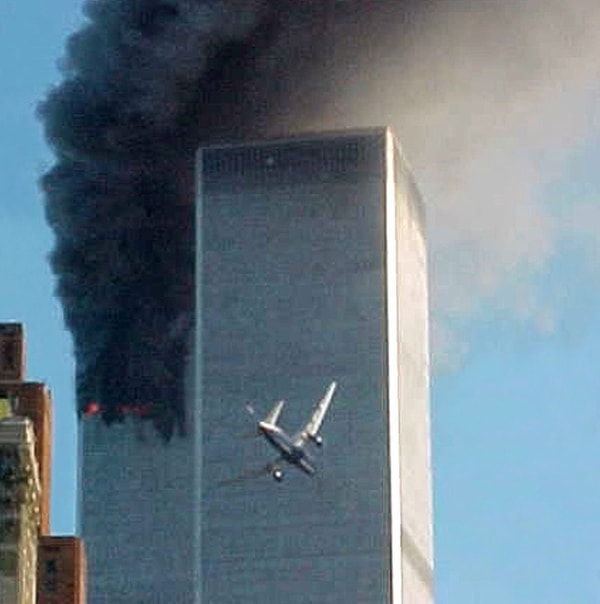Richard Picciotto was on the sixth floor of the World Trade Center’s North Tower when the building collapsed after it was hit by an airplane on Sept. 11, 2001.
“I don’t want people to ever forget what happened,” said the now retired New York City fire chief.
“You forget history, you are destined to repeat it and I don’t want this repeated. If people are aware, we won’t let this happen.”
Picciotto was the guest speaker at the Red Deer Rotary Club’s mac and cheese fundraiser lunch for the Red Deer Royals marching band on Wednesday.
Residents and first responders from across Alberta came to the Sheraton Hotel to hear the story of the 9/11 survivor.
Picciotto wrote a book about his experience and shares the story at engagements across North America.
On that fateful day, he headed into his station in New York a couple of hours early, as he always did. He heard the call of the first plane hitting the World Trade Center’s South Tower and called dispatch to ask to get called to go.
In 1993, Picciotto had worked in Lower Manhattan when the World Trade Center was hit by a car bomb. He was responsible for the evacuation of the building and thought he could help, based on his experience.
As he was driving down, the second plane hit the North Tower.
Just like 1993, Picciotto went into the North Tower to help. He was sent to rescue people trapped on the 20th and 23rd floors of the building.
The North Tower had 99 elevators and three stairwells. With all the elevators not working, evacuation was through stairwells.
Picciotto led a group of firefighters up the narrow stairway against a current of people trying to get out as quick as possible. Every few floors he would get out of the stairwell and run around the office area looking for stragglers and those trapped.
When he reached the 35th floor, he heard a deafening noise and felt the whole building shake. He was told by radio that the South Tower had collapsed. It took about 10 seconds for the tower to crumble to the ground.
In that moment, he gave the order to evacuate the building, meaning all firefighters had to drop whatever equipment they were carrying and get out as quick as possible. By then it was mostly just first responders left in the stairwells.
As he started descending the building, he checked every floor for people who had yet to leave.
On one floor, he had to grab and order a man to leave — he had continued working throughout the incident. On another floor, he had to get help for people who were not ambulatory.
At one point, the stairwell he and many other firefighters were in became jammed with debris. Only one stairwell was usable after the South Tower’s collapse so everyone had to pile into it.
By the time he got to the sixth floor, Picciotto heard the same noise as he had before, only this time it was louder and the shaking was more violent. He was jostled around as the North Tower came crashing down. It only took eight seconds, but in that time he thought of his life, his family and friends, and he prayed for death to be quick.
When the crashing ended, he and about 10 firefighters, a port authority police officer and a woman the officer was helping were safe in a void in the rubble. Voids are precarious, similar to a house of cards, and it was important to stay still so as not to jar anything loose.
It wasn’t until he saw a shimmer of daylight above him that he started to move, five hours after the tower collapsed. He scaled to the top of the void and called on everyone else to follow. They all escaped.
The fundraising event was co-chaired by James McPherson and Ray McBeth.
“We’re raising money for a charity in our community,” said McPherson. “But we always want to recognize the community to which these people serve, and this time it was the first responders.”
About 700 tickets were sold to the event. Alberta emergency officials attended from various parts of Alberta.
The Rotary Club had a goal of raising $100,000 for the Red Deer Royals marching band for new uniforms, some new instruments and a donation to the Red Deer Royal’s ‘find a home’ campaign.
“They have raised a lot of money and we’re going to add a lot of money to that fund to get their own home,” said McPherson.
The amount raised is not yet known.
mcrawford@www.reddeeradvocate.com
